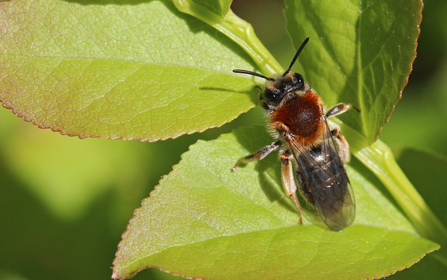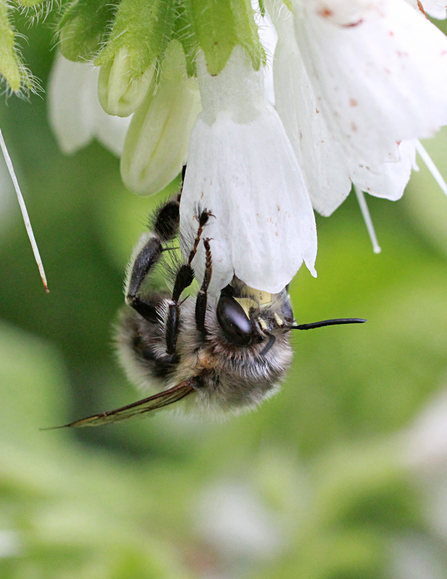There are numerous types of solitary bees and many that take wing with the first signs of spring. In fact, most of the bees we see in early spring will be of this kind. Solitary bees don’t sting and are incredibly important pollinators of flowers, fruit trees and crops like oil-seed rape.
Solitary bees dig their own burrow and live in it alone. Depending on the species, a solitary bee nest can be found anywhere. But don’t worry about your house walls, solitary bees prefer holes in the ground or sandy banks. They can also be tempted to live in specially made ‘bee houses’ and even old snail shells.
Some of the most common spring solitary bees you are likely to see in the coming months include the early mining bee, tawny mining bee and hairy-footed flower bee.



